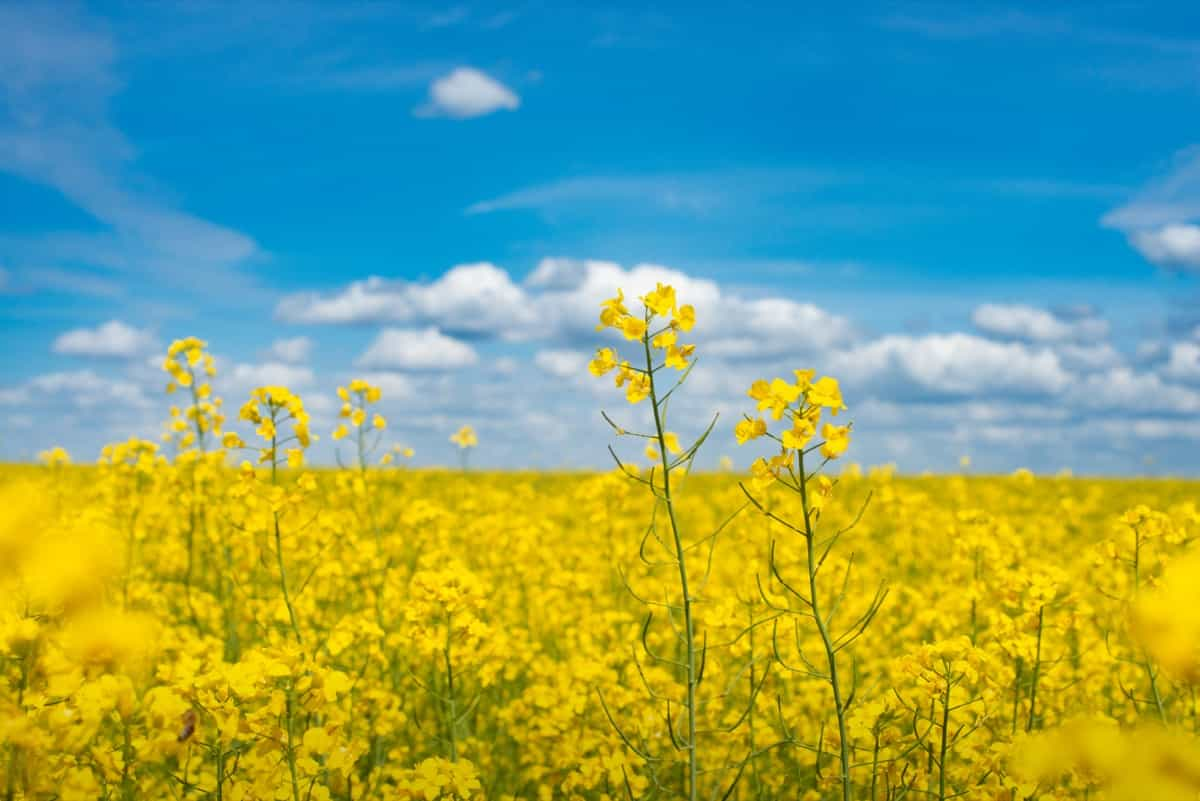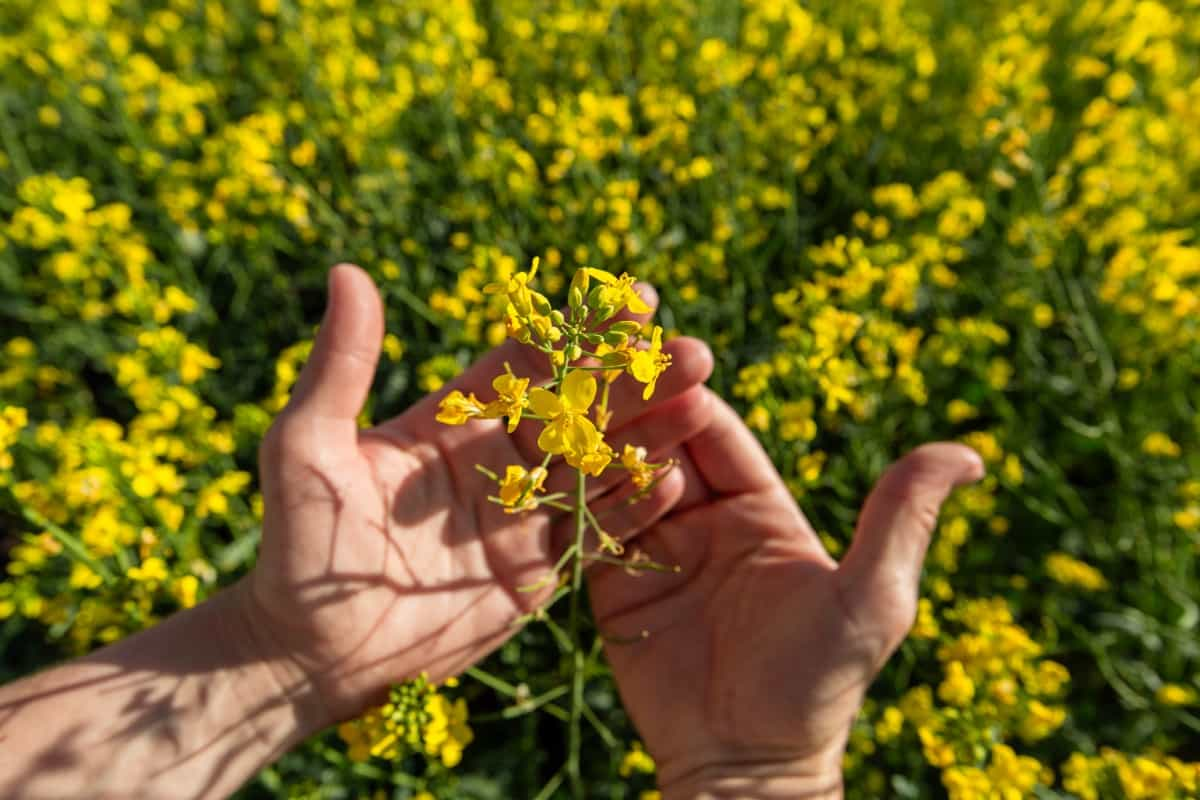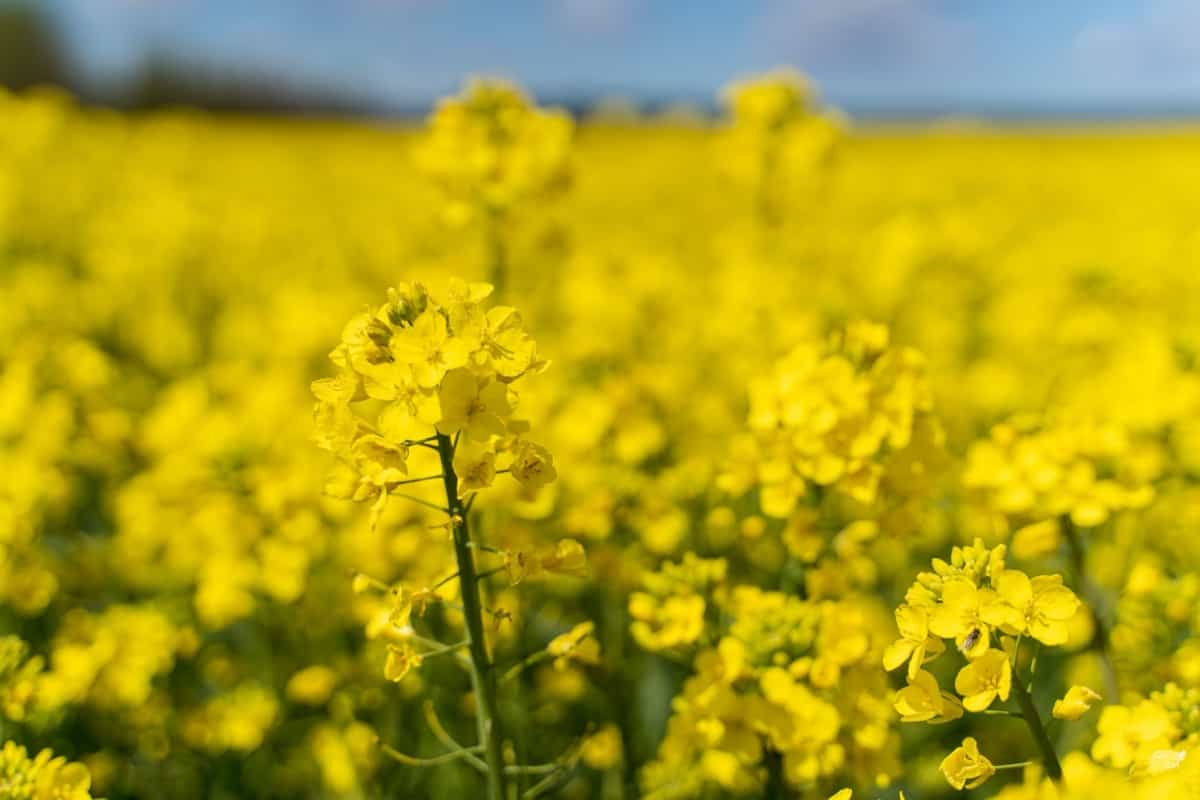Discover effective strategies for managing pests and diseases in canola crops. From integrated pest management to precise fungicide applications, explore ways to combat flea beetles, blackleg, clubroot, and more. Learn about biocontrol methods and sustainable farming practices to protect your canola yield while minimizing environmental impact. Implement precision agriculture techniques and monitor pests closely for optimal crop protection.

Maximize your harvest with comprehensive canola pest management solutions. Canola is a widely grown oilseed crop with economic value. However, like any other crop, canola is susceptible to pests, and diseases that can significantly impact its yield and quality. Effective pest, and disease management strategies are to ensure the sustainable production of canola and maintain its profitability for farmers.
Canola Pest and Disease Management
Overview of Common Canola Pests and Diseases
Canola faces a range of pests and diseases that can affect its growth and development. Some of the common pests include flea beetles, cutworms, and aphids, while fungal diseases like blackleg, sclerotinia stem rot (white mold), and clubroot are among the most prevalent diseases. Additionally, viral and bacterial diseases can also pose significant threats to canola crops.
Importance of Integrated Pest Management (IPM) Strategies
Integrated Pest Management is an approach to pest and disease management that aims to minimize the use of chemicals while maximizing the control of pests and diseases. IPM strategies integrate various techniques, including cultural, chemical, biological, and physical control methods, to prevent and manage pests and diseases effectively.
Identifying Canola Pests
Accurate identification of pests is crucial for implementing appropriate control measures. Canola pests can be identified through various methods, such as visual inspection, monitoring, and scouting techniques. Regular field visits and close observation of plants can help detect the pests early on and take timely action.
Insect Pests: Symptoms and Damage
Insect pests pose a significant threat to canola crops, causing various symptoms and damage. Flea beetles, known for their feeding damage on canola leaves, can result in stunted growth and reduced yield. Cutworms, on the other hand, can cut off young seedlings at or below the soil surface, leading to stand loss. Aphids, which suck sap from plants, can cause distortion, yellowing, and wilting of leaves.
Monitoring and Scouting Techniques
Monitoring and scouting techniques are essential components of IPM for canola pests. Regular field visits, the use of pheromone traps, and visual inspections can help assess pest populations and determine the need for intervention. Monitoring should be done at different growth stages to identify pest hotspots and implement appropriate control measures.
Identifying Canola Diseases
Canola diseases, particularly fungal diseases, can significantly impact crop health and yield. Blackleg, caused by the fungus Leptosphaeria maculans, can cause stem cankers and premature ripening of pods. Sclerotinia stem rot, caused by the fungus Sclerotinia sclerotiorum, can lead to wilting, stem lesions, and white mold development. Clubroot, caused by the pathogen Plasmodiophora brassicae, can result in root galling and stunted growth.
Fungal Diseases: Identification and Impact
Proper identification of fungal diseases is essential for effective disease management. Visual symptoms, such as leaf spots, stem cankers, wilting, and mold development, can help diagnose fungal diseases. The impact of fungal diseases on canola crops can be severe, leading to reduced yield, poor seed quality, and increased vulnerability to other pathogens.
In case you missed it: Guide to Using Milky Spore for Lawns and Gardens: Eco-Friendly Pest Control with Milky Spore

Viral and Bacterial Diseases: Recognition and Effects
Viral and bacterial diseases can also affect canola crops. Viral diseases, such as turnip yellows virus and beet western yellows virus, can cause leaf yellowing, stunting, and reduced yield. Bacterial diseases, like blackleg and soft rot, can result in stem cankers, wilting, and rotting of plant tissues. Early recognition and proper management of these diseases prevent their spread and minimize crop damage.
Cultural Control Methods
Cultural control methods focus on modifying agricultural practices to reduce pest and disease incidence. Crop rotation is an effective cultural control method that involves alternating canola with non-host crops to break pest and disease cycles. This practice helps disrupt the life cycle of pests and pathogens, reducing their population in subsequent canola crops. Additionally, tillage practices, such as plowing and disking, can bury crop residues and disrupt pest habitats.
Crop Rotation and Its Benefits
Crop rotation offers several benefits in canola pest and disease management. By rotating canola with non-host crops, farmers can reduce pest, and disease pressure, improve soil health, and enhance nutrient availability. This practice also helps break pest and disease cycles, reducing the reliance on chemical pesticides and promoting sustainable farming practices.
Tillage Practices to Reduce Pest and Disease Incidence
Tillage practices play a vital role in pest and disease management by altering the environment and disrupting pest habitats. Deep plowing can bury crop residues, reducing the survival of pests and pathogens. Disking can break up soil clods, exposing pests to predators and adverse environmental conditions. Proper timing and implementation of tillage practices can effectively reduce pest and disease incidence in canola crops.
Planting Disease-Resistant Varieties
Planting disease-resistant canola varieties is an essential component of integrated pest and disease management. Breeding programs have developed canola varieties with resistance to specific pests and diseases, such as blackleg-resistant varieties. By selecting resistant varieties, farmers can reduce the risk of disease outbreaks, and minimize the need for chemical control measures.
Chemical Control Strategies
Chemical control strategies involve the use of pesticides to manage pests and diseases in canola crops. When used judiciously and as part of an integrated approach, pesticides can be effective in controlling pests and diseases. Insecticides should be selected based on the target pest, and their timing of application should consider the pest’s life cycle. Fungicides should be applied preventively or at the early stages of disease development to optimal control.
Insecticides: Selection and Timing
Selecting the appropriate insecticide for canola pest control is crucial to achieve effective results. Different insecticides target specific pests, and their selection should consider factors such as pest species, population density, and potential resistance issues. The timing of insecticide application should coincide with the pest’s most vulnerable stage, maximizing control and minimizing damage.
Fungicides: Application Techniques and Timing
Fungicides play a vital role in managing fungal diseases in canola crops. Proper application techniques, such as uniform coverage and adequate spray volume, are essential to achieve optimal disease control. Fungicides should be applied preventively or at the early stages of disease development for better efficacy. Timing is crucial, as late applications may not provide adequate protection.
Herbicide Resistance Management
Weed control is an integral part of canola management, and herbicides are commonly used for weed suppression. However, the overreliance on herbicides can lead to the development of herbicide-resistant weed populations. To manage herbicide resistance, farmers should implement diverse weed control strategies, including crop rotation, tillage, and the use of different herbicide modes of action.
Biological Control Options
Biological control uses natural enemies, such as beneficial insects and natural predators, to regulate pest populations. Canola crops can benefit from the presence of insects like ladybugs, lacewings, and parasitic wasps, which feed on pests like aphids and caterpillars. Additionally, biopesticides, derived from biological sources, can be used to control pests and diseases sustainably.
In case you missed it: Everything About Using Sticky Trap Pest Control

Beneficial Insects and Natural Predators
Beneficial insects and natural predators play a crucial role in maintaining ecological balance in canola fields. Ladybugs, for example, are voracious aphid predators, helping control aphid populations naturally. Lacewings and parasitic wasps also contribute to biological control by feeding on various pests. Encouraging the presence of beneficial insects can reduce the use of chemical pesticides and promote sustainable pest management practices.
Biopesticides and Their Application
Biopesticides are derived from natural sources, including plants, bacteria, and fungi, and are environmentally friendly alternatives to chemical pesticides. These products can be used to control pests and diseases in canola crops without leaving harmful residues. Biopesticides should be applied following label instructions, considering factors such as target pests, timing, and environmental conditions to achieve optimal results.
Physical and Mechanical Control Measures
Physical and mechanical control measures involve the use of physical barriers and mechanical devices to prevent or manage pests and diseases. Weed control methods, like hand weeding and mechanical cultivation, can help suppress weed growth and reduce competition with canola plants. Pest exclusion techniques, such as netting and screens, can prevent pests from accessing canola fields, reducing the need for chemical control measures.
Weed Control Methods
Proper weed control is essential for maximizing canola yield and quality. Weed management strategies include cultural practices, such as crop rotation and tillage, as well as the use of herbicides. Integrated weed management approaches that combine multiple control methods can help minimize weed competition and reduce the reliance on chemical herbicides.
Pest Exclusion Techniques
Pest exclusion techniques involve the use of physical barriers and preventive measures to keep pests out of canola fields. Netting, screens, and row covers can be used to protect young canola plants from insect pests. Proper sanitation practices, like removing crop residues and weed hosts, can also help reduce pest populations and prevent the spread of diseases.
Integrated Pest Management (IPM) in Canola
Integrated Pest Management (IPM) is a comprehensive approach that combines multiple pest and disease control methods for sustainable crop management. The principles of IPM include accurate pest identification, regular monitoring, prevention, cultural control practices, biological control, and judicious use of chemical control measures. Implementing IPM strategies can help reduce pesticide use, minimize environmental impact, and ensure the long-term viability of canola production.
In case you missed it: Ultimate Guide to Crafting White Oil Insecticide – A Simple and Effective Recipe for Plant Pests

Conclusion
Mastering canola pest and disease management is essential for maximizing crop yield and sustainability. By implementing integrated strategies, monitoring closely, and embracing sustainable practices, farmers can safeguard their canola crops and ensure long-term success in cultivation.
- Beneficial Insects in Pest Management
- Natural Solutions for Pest Control in Flower Gardens
- Types of Fungicides Used in Agriculture
- Common Issues in the Fruit Development Stage of Pomegranate Farming
- Fruit Development Issues in Papaya: Easy Solutions and Treatment
- Soil-Borne Diseases and How to Protect Your Plants
- Practices to Prevent Disease Spread in the Garden
- From Wilted to Thriving: How to Treat Root Rot Naturally in Houseplants
- Natural Remedies to Cure Brown Spots on Fig Tree Leaves